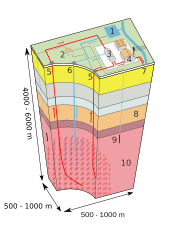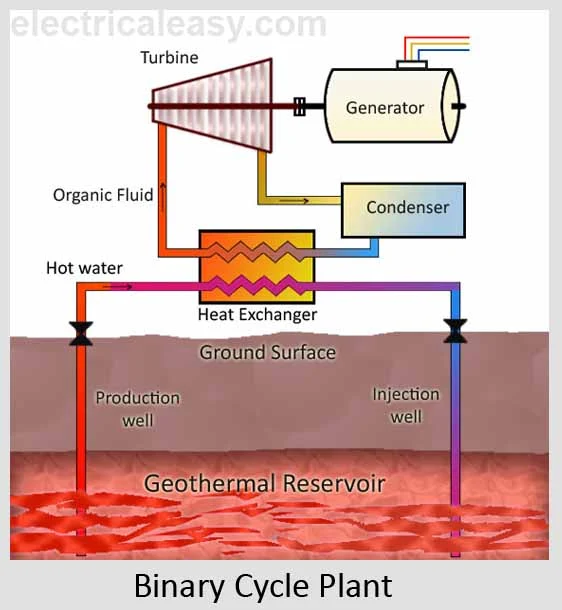Geothermal Geology: Volcanic Systems & EGS Essentials
The Earth's internal heat, a virtually inexhaustible resource, offers a promising pathway towards sustainable energy production. Understanding the geological principles that govern the formation and behavior of **geothermal resources**, especially those associated with dynamic environments like volcanic and rift systems, is crucial for unlocking their potential. This article explores the core geological concepts underpinning **volcanic geothermal systems**, **rift zone geology**, and the essential conditions required for the development of **enhanced geothermal systems (EGS)**.
Geothermal Energy and Geological Foundations
**Geothermal energy** harnesses the Earth's internal heat for various applications, including electricity generation and direct heating. The presence of a **geothermal resource** depends on several key geological factors: a heat source (magma intrusion or high radiogenic heat production), a permeable reservoir for fluid storage, and an impermeable caprock to trap heat and fluids. These factors dictate the efficiency and sustainability of any **geothermal energy** project.
The fundamental principle is **heat transfer**. Heat moves from the Earth's core to the crust through conduction and convection. In **hydrothermal systems**, convection is the dominant process, where heated water rises through fractures and permeable zones, transporting heat towards the surface. A deep understanding of subsurface geology is therefore essential for **geothermal exploration**.
Understanding Volcanic Geothermal Systems
**Volcanic geothermal systems** are characterized by high **geothermal gradients** due to the presence of shallow magma bodies. These systems are typically found in active volcanic regions, often associated with subduction zones or hotspots. The heat source is directly linked to magmatic intrusions, which heat surrounding groundwater, creating powerful **hydrothermal systems**.
The complexity of **volcanic geothermal systems** stems from the dynamic interplay between volcanic activity, tectonic forces, and fluid flow. Eruptions, faulting, and hydrothermal alteration can significantly impact reservoir permeability and fluid chemistry. Successful exploitation requires detailed geological and geophysical surveys to delineate the magma body, identify permeable zones, and assess the risk of volcanic hazards.
Exploring Rift Zone Geology and Geothermal Potential
**Rift zone geology** presents another favorable setting for **geothermal resources**. Rifting environments, where the Earth's crust is being pulled apart, are characterized by extensional faulting, volcanism, and high **geothermal gradients**. These geological processes create pathways for fluid flow and allow magmatic heat to reach shallow depths.
The East African Rift System, for example, is a prime location for **geothermal exploration** due to its extensive network of faults and volcanoes. These faults act as conduits for deep-seated fluids, creating numerous **hydrothermal systems**. Understanding the structural controls on fluid flow and the age and composition of volcanic rocks is crucial for assessing the **geothermal energy** potential of rift zones.
Essential Conditions for Enhanced Geothermal Systems (EGS)
**Enhanced geothermal systems (EGS)** aim to access **geothermal resources** in areas where the permeability is insufficient for conventional **hydrothermal systems**. The core principle of **EGS** involves creating artificial fractures in hot, dry rocks at depth to enhance permeability and allow fluid circulation. This requires a rock formation with sufficiently high temperature but low permeability.
Several conditions are essential for successful **EGS** development. These include: a high **geothermal gradient**, a large volume of hot rock at a reasonable depth, favorable rock mechanics for fracture stimulation, and a reliable water source. Geological characterization plays a vital role in identifying suitable **EGS** sites and optimizing fracture stimulation strategies. **

Geothermal Gradients and Heat Transfer Mechanisms
**Geothermal gradients**, the rate of temperature increase with depth, are a fundamental parameter in **geothermal exploration**. Normal **geothermal gradients** are around 25-30 °C per kilometer, but can be significantly higher in **volcanic geothermal systems** and rift zones. Heat transfer occurs through conduction, convection, and radiation, with convection being the most efficient mechanism for transporting heat in **hydrothermal systems**.
Understanding the interplay between these heat transfer mechanisms is critical for predicting the temperature distribution within a **geothermal resource**. Numerical modeling techniques are often employed to simulate fluid flow and heat transfer in complex geological settings, helping to optimize well placement and estimate the long-term sustainability of **geothermal energy** production.
Hydrothermal Systems: A Closer Look
**Hydrothermal systems** are the heart of most **geothermal resources**. These systems consist of a heat source, a reservoir of permeable rock saturated with water, and an impermeable caprock that prevents heat loss to the surface. The water is heated by the heat source, becomes less dense, and rises through fractures and permeable zones. This circulation pattern carries heat towards the surface.
Different types of **hydrothermal systems** exist, ranging from vapor-dominated to liquid-dominated, each with unique characteristics and challenges for exploitation. Vapor-dominated systems are relatively rare but can produce high-quality steam directly, while liquid-dominated systems require careful management to avoid scaling and corrosion problems.
Geothermal Exploration Techniques and Data Analysis
**Geothermal exploration** relies on a combination of geological, geophysical, and geochemical techniques. Geological mapping helps to identify favorable structures, such as faults and fractures, that can act as conduits for fluid flow. Geophysical surveys, including gravity, magnetic, and seismic methods, provide information about subsurface geology and identify potential **geothermal resources**.
Geochemical analysis of groundwater and gases can provide insights into the temperature, origin, and flow paths of **hydrothermal systems**. Data from these various sources are integrated to create a comprehensive geological model of the **geothermal resource**, guiding drilling and production strategies. **

Essential Conditions for Geothermal Resources Summary
| Condition | Description | Importance |
|---|---|---|
| Heat Source | Magma intrusion, high radiogenic heat production | Drives the **geothermal system**, providing the necessary heat. |
| Permeable Reservoir | Fractured rock, porous sediments | Allows for fluid storage and circulation. |
| Impermeable Caprock | Shale, clay, dense rock | Traps heat and fluids, preventing heat loss to the surface. |
| Water Source | Groundwater, meteoric water | The fluid that transports heat through the system. |
EGS Specific Conditions Summary
| Condition | Description | Importance |
|---|---|---|
| High Temperature Rock | Rock at sufficiently high temperature at depth | Necessary for efficient heat extraction. |
| Low Permeability | Low natural permeability of the rock | To justify and require enhanced geothermal system approach |
| Suitable Depth | Reasonable depth for drilling and operation | To manage cost and technical constraints. |
| Favorable Rock Mechanics | Rock properties suitable for fracture creation and stimulation | To effectively create an artificial reservoir |
Frequently Asked Questions (FAQ)
Q: What is the difference between conventional geothermal and EGS?
A: Conventional **hydrothermal systems** rely on naturally occurring permeable reservoirs, while **enhanced geothermal systems (EGS)** create artificial fractures in low-permeability rocks to enhance fluid flow.
Q: What are the environmental benefits of **geothermal energy**?
A: **Geothermal energy** is a renewable and sustainable energy source with low greenhouse gas emissions compared to fossil fuels.
Q: Where are the most promising locations for **geothermal exploration**?
A: Active volcanic regions, rift zones, and areas with high **geothermal gradients** are prime targets for **geothermal exploration**.
Conclusion
Understanding the geological principles that govern **geothermal systems** is essential for unlocking the vast potential of **geothermal energy**. **Volcanic geothermal systems** and **rift zone geology** offer promising opportunities for **geothermal exploration**, while **enhanced geothermal systems (EGS)** can expand access to **geothermal resources** in previously unexploitable areas. By integrating geological knowledge with advanced exploration and development techniques, we can harness the Earth's internal heat to provide clean, sustainable energy for future generations.